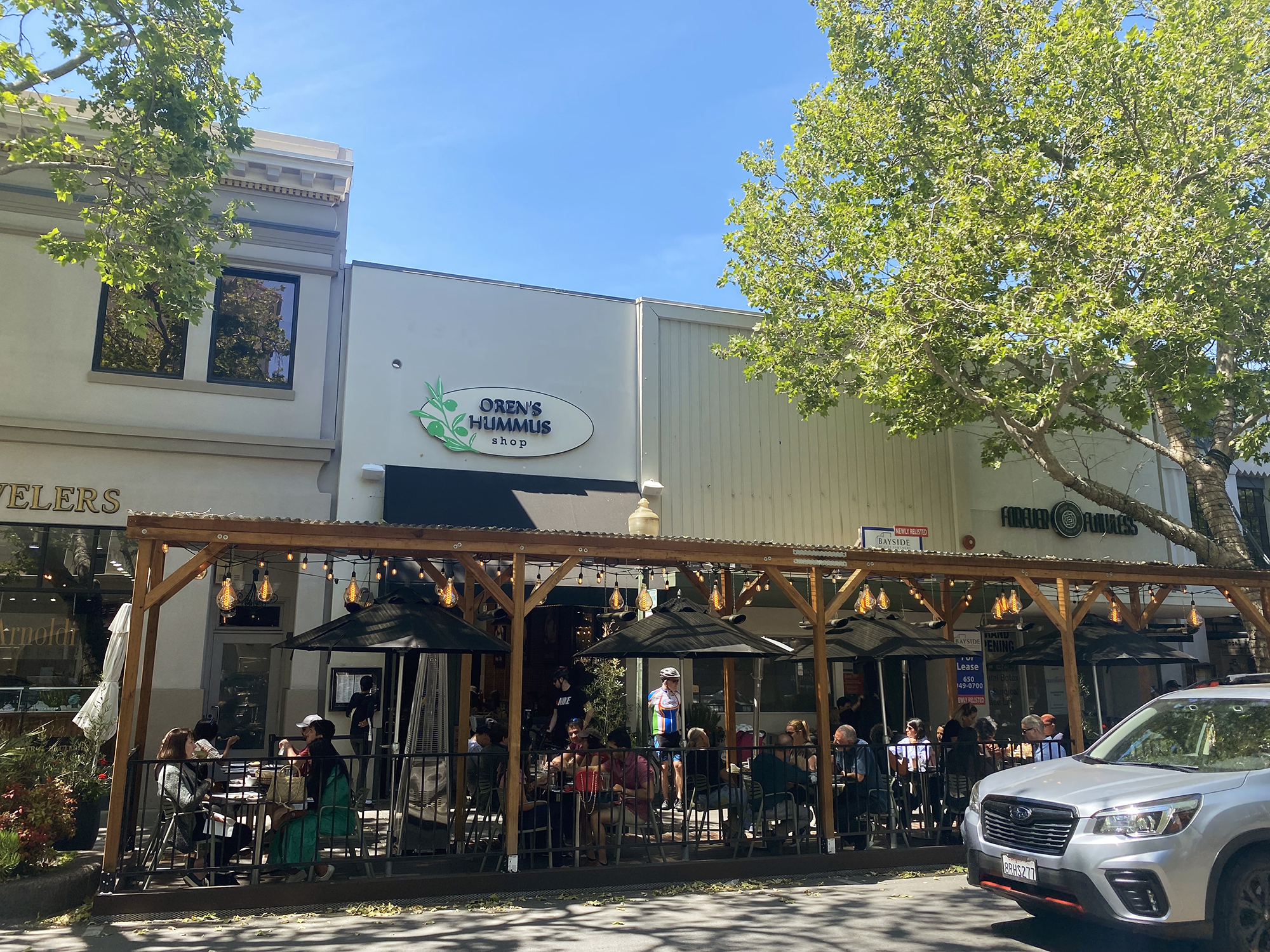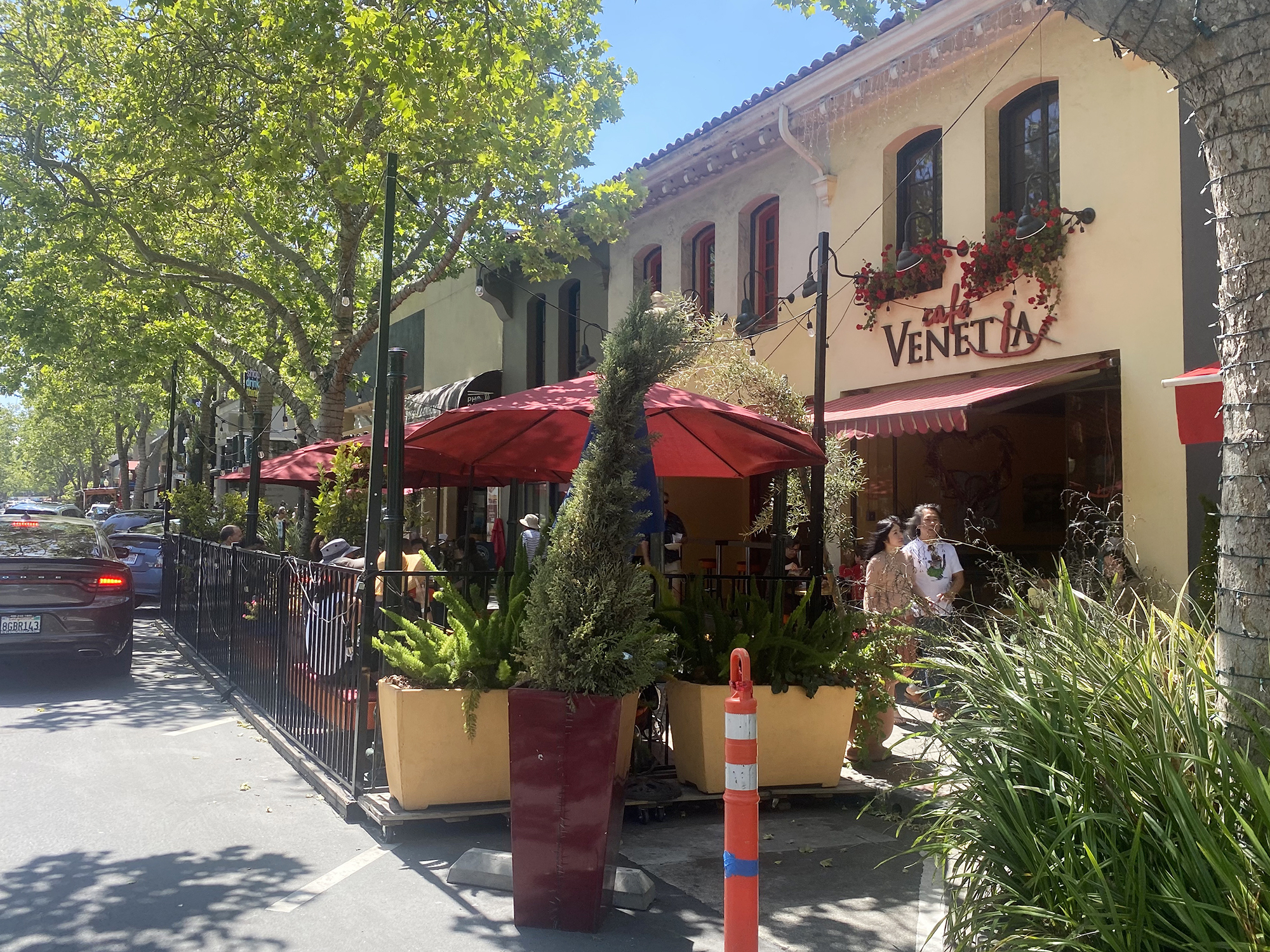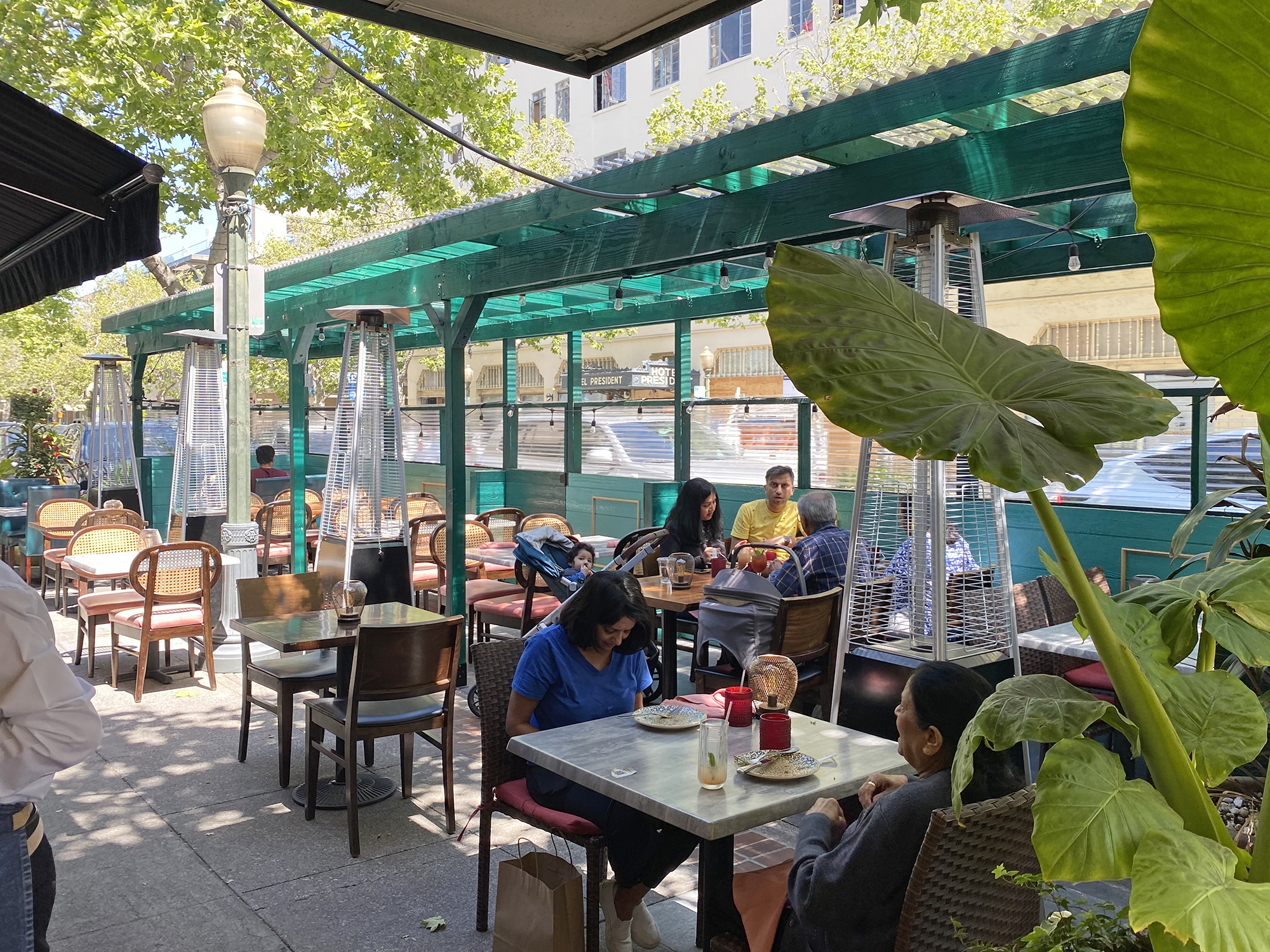As Palo Alto prepares to redesign University Avenue, downtown restaurants are rallying to protect a treasured asset that sustained them through the darkest days of the pandemic: their recently constructed parklets.
Initially approved as a temporary measure to address a public health emergency, parklets are now a permanent and popular feature of downtown's dining scene and a welcome boost to the bottom lines of local restaurants. The City Council recognized their value three months ago, when it voted to transform what had heretofore been a pilot program into a permanent one, effectively ensuring that the outdoor dining areas are here to stay for the foreseeable future.
That commitment was tested on Dec. 18, when council members reviewed a new proposal to enhance the University Avenue streetscape. Pitched by the consulting firm CSW and endorsed by city staff, the recommended alternative would increase sidewalk widths from 12.5 feet to 17.5 feet, partly by shifting the street from angled to parallel parking.
Unlike on California Avenue, which was recently established as a car-free promenade, University Avenue would retain two travel lanes for cars in each direction. Its widened sidewalks would be conceptually divided into three zones: a "commerce zone" near buildings that includes dining and merchandise racks; a pedestrian zone in the middle; and an "amenity zone" near the road for seating, newspaper racks and trash cans.
One casualty of this scheme is parklets. With dining areas now designated for the "commerce zones" next to the restaurants, the existing parklets would be removed. The report from CSW notes that parklets "create complications along the street as they reduce street parking, create conflicts between food servers and pedestrians, as well as complicate street sweeping."
"As this alternative provides an equitable seating area for all businesses along the corridor, which is shielded from vehicle traffic, we recommend discontinuing the parklet program for University Avenue," the report states.
That recommendation did not sit well with restaurant owners who in some cases invested tens of thousands of dollars in constructing the new parklets. Clayton Adelhelm, a partner in the downtown restaurant Local Union 271, said the business had spent about $80,000 to create the parklet, which he said helped make University Avenue "a beautiful space for the community to enjoy dining safely and comfortably."
Like other restaurant owners, he objected to the new proposal, which would remove the restaurant's parklet and result in it losing about 25 tables, Adelhelm said.
Randale Conner, general manager at Oren's Hummus, similarly slammed the recommended plan for University Avenue. The restaurant had spent more than $150,000 on its parklet, he claimed, a sum that he noted does not include the fees it paid to renew its permits (city staff countered that most parklets cost far less than that).
"Eliminating parklets will wipe out the gains made during the pandemic, which were embraced and appreciated by the community," Conner said.
Conner urged the council to stop moving the goalposts, a sentiment that was echoed by Claudia Cornejo, owner and operator of Café Venetia. The restaurant sector continues to be very fragile, Cornejo told the council during the public hearing.
"Every other year we get a curveball, not allowing us any sort of stability. The elimination of parklets will be yet another blow to our fate," Cornejo said.
The council largely agreed. While council members largely embraced the consultant's goal to revitalize University Avenue, they showed little appetite for abandoning the nascent parklet project that they only recently agreed should be made permanent. Council member Ed Lauing made a case for revising the recommendation so that it could accommodate parklets, a suggestion that his colleagues unanimously supported.
"The whole idea of striking a balance for economic vitality is exactly the right direction," Lauing said. "Economic vitality right now downtown is being driven unquestionably by parklets. To take a risk on that would be a very serious risk to take and to make a judgment with the one option in front of us is just the wrong approach entirely."
The alternative proposed by CWS was one of three that it presented in its new report. Other ideas called for installing bike lanes or further widening sidewalks. Both ideas were rejected by staff and consultants alike because they would require removal of trees and parking spots.
For some downtown property owners, the loss of parking posed a particularly significant problem. Leaders of downtown property companies Thoits Brothers and Premier Properties participated in the new plan and made sure that it reflected their position about maintaining on-street parking. Both supported the recommendation from CSW, which would remove parklets and preserve on-street parking.
John Shenk, CEO of Thoits Brothers, said his company wants to see restaurants like Local Union 271 and Rooh, an Indian restaurant with a distinctively large parklet, thrive (they happen to be Thoits Brothers tenants, he noted).
"But at this time, we must not act in our self-interests but do what's best for the total community and the next generation of businesses that will call University Avenue home," John Shenk said. "We need safety and compliance with all codes and ordinances and we need now to invest in our future."
Council members, however, rejected the idea that the success of University Avenue is somehow incompatible with parklets. They directed staff and consultants to come up with new alternatives that would preserve parklets and that would allow for a variety of sidewalk widths along University Ave.
Council member Pat Burt questioned the assertion in the report that the entire University Avenue should have 17.5-foot sidewalks.
"I don't understand why we'd need 17.5-feet sidewalks in front of a bank or in front of a drug store," Burt said.
The bigger issue, however, was parklets. Like others, Burt thought it was peculiar that the $40-million streetscape plan embraced by staff and consultants would eat into the newly constructed dining areas.
"The notion that we thought the public and private property owners and the city put in $40 million and cut in half the amount of outdoor dining doesn't make good sense to me," Burt said.
The city kicked off the University Avenue streetscape project two years ago as a way to boost downtown's vitality and make the economically ailing area more competitive with shopping destinations like Stanford Shopping Center, Santana Row in San Jose and the Town & Country Village. Steve Guagliardo, assistant to the city manager, said the goal is to offer a "compelling visitor experience" that compares to those destinations.
"We're not talking about design for today or even design for tomorrow," Guagliardo said. "What we're looking to do with this concept plan is take the opportunity we have to make a significant investment in University Avenue and make it something that works for all the stakeholders."
The council, however, concluded that the option favored by city staff and consultants falls well short for this goal. Council member Julie Lythcott-Haims suggested that the preferred alternative "hurts dining, does nothing for vacancies, is hard on bikers and does nothing for social spaces."
"I confess I don't yet see the vision in it, the elements that are going to give University Avenue an attractive sense of overall coherence and a rebranding of the environment that does in fact make us a destination on par with other places," Lythcott-Haims said.
The council broadly agreed, however, with the consultant's conclusion that dedicated bike lanes on University would not be desirable given the relatively narrow right-of-way. They supported either moving bike facilities to Lytton or Hamilton Avenue or shrinking the travel lane on University Avenue to accommodate bikes.
Council members also requested options that would cost less than $40 million and that could ostensibly be implemented faster, alternatives that staff would bring to a council committee for review in the coming months.
While the future configuration of University Avenue remains up in the air, council members agreed that it should include parklets. Vice Mayor Greer Stone empathized with the many restaurant owners who came to complain about the council's puzzling sequence of actions: its decision early in the fall to create a permanent parking program followed by the current proposal to effectively remove parklets from University Avenue.
"A lot of this was a short-term solution to issues within the pandemic," Stone said, referring to the origin of parklets. "But when we've been talking about a permanent parklet program and kind of placing that promise and that expectation out there, I feel like we're reneging on that deal."





Comments
Registered user
Old Mountain View
on Dec 19, 2023 at 2:57 pm
Registered user
on Dec 19, 2023 at 2:57 pm
They want to give up dozens of beautiful outdoor dining tables, in exchange for one person parking their SUV there for 3 hours? WTF.